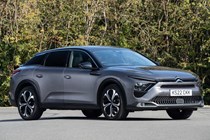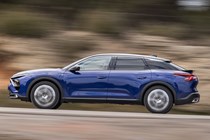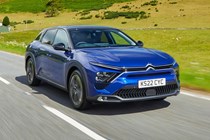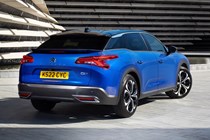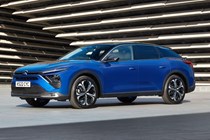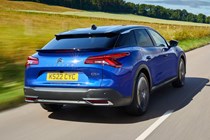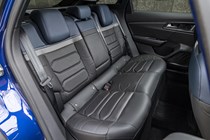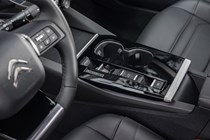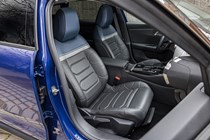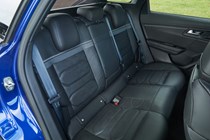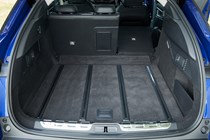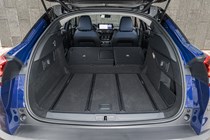
Citroën C5 X engines, drive and performance
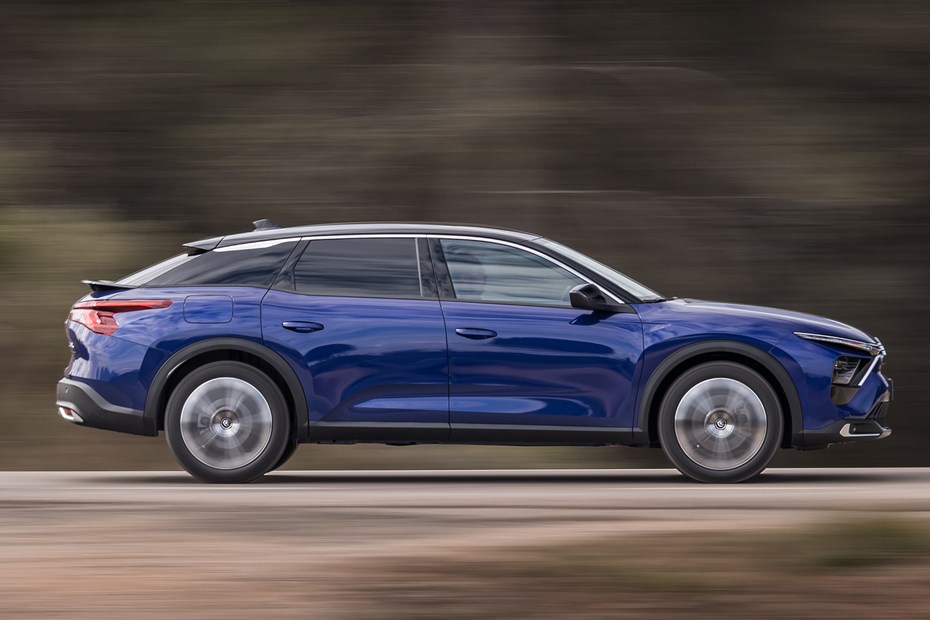
- Diesel conspicuous by its abscence
- One petrol, one plug-in hybrid
- Entry-level Puretech is the best of the bunch
Petrol engine
The range kicks off with the 1.2-litre Puretech three-cylinder unit, with 130hp and 230Nm of torque. Although this sounds rather weedy for a car the size of the C5 X, it punches above its weight and is well worth considering if speedy acceleration isn’t important
It thrums away eagerly in normal driving but pulls well enough when you rev it, and is a very likeable and usable power unit that’s well matched to the C5 X’s relaxed ethos. It’s not quick – 0-62mph comes up in 10.1 seconds with a maximum speed of 130mph. It can also struggle on steep hills as the standard-fit eight-speed auto shuffles ratios to keep things on the boil, while the slight vibration from the engine is a little disappointing in a flagship model.
A more powerful, 1.6-litre engine with 180hp was briefly available but it’s relative lack of popularity meant it was dropped shortly after launch. We should also acknowledge the somewhat curious lack of a diesel engine option. Yes, diesel isn’t very popular these days, but it would fit the C5 X’s fantastic ability as a long-distance cruiser, and give a more useful towing capacity.
Hybrid engine
The flagship model is the 225hp plug-in hybrid. Fully charged, it accelerates briskly and effortlessly with noticeably low levels of engine noise – 0-62mph comes up in 7.9 seconds and the maximum speed is 145mph.
These are acceptable performance figures for your money, but there are plenty of quicker rivals out there. But the C5 X’s forte is its refinement – and that makes it one feel the option most suited to the car’s refined ride and laid-back demeanour.
As contributor Adam Binnie concluded in his six-month extended test of the PHEV version: ‘I’ve got on really well with the C5 X, it always seems to give you the acceleration you need without hesitation, or noticeable shunts from changing gear or switching from electric to petrol power. There are shift paddles behind the wheel but tellingly I’ve never felt the need to use them.’

What’s it like to drive?
- Ride comfort is astounding
- Body control less so
- Brakes and steering let the side down
Refinement and comfort are key Citroen values, which is bolstered in the C5 X by the latest version of the company’s comfort-oriented suspension. It has progressive hydraulic bump stops to reduce shocks at the limit of suspension travel, plus a new Active Scan function first seen in the DS 7 (fitted as standard to plug-in hybrid models).
The Active Scan system uses a camera to read the road ahead and primes the suspension to brace itself for potholes and other imperfections. This system works well, although we found extreme crests and compressions did cause a little float and wallow in Comfort mode.
What the system means for you is that the C5 X’s ride is far quieter than in most rivals, with low levels of wind and road noise. Especially in the plug-in hybrid model we tested, which was fitted with acoustic side glass. These qualities make it a great car for those who cover long motorway distances on a regular basis and value refinement.
Despite the comfort, the car’s handling is tidy enough as long as you don’t mind the bodyroll and a tendency to pitch (squat under acceleration and dive when braking). The 130hp model is the lightest version, and feels it. The steering is lighter than some rivals yet you still build confidence in it as it allows you to accurately place the car’s nose. Though it’s the Puretech 180 engine that best blends handling and performance.
The plug-in hybrid is the one to have if you’re after the best levels of refinement. In electric mode, it glides along silently, and the hybrid system keeps things restful until the battery is depleted. Standard adjustable suspension allows it to be softened further in Comfort mode and stiffened in Sport mode. This helps when cornering, but can’t mask the Hybrid’s 300kg of extra bulk in the tail.
Adam added: ‘What’s nice is that the body stays surprisingly composed even when you start to drive more quickly. I won’t call it sporty, but also because that kind of misses the point. It’s good enough that it feels in control at all times during normal driving, but not so good that you feel like you’re wasting the car’s ability by not exploiting it.’


